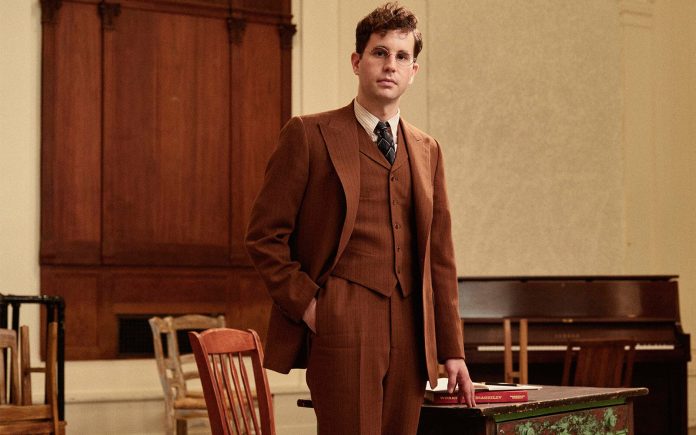Parade became the latest play on Broadway to hit the news this week, with right wing extremist groups lining the street to protest the show. The group shouted slurs, waved banners, and handed out flyers that promoted a group that have been linked to an antisemitic shooting in Los Angeles last week. The show tells the true story of Leo Frank, a Jewish business owner falsely accused and convicted of the murder of a young girl.
The American theatre scene has always been the foundation for shows that have faced protests: there have been substantially fewer on this side of the Atlantic that have reached the news in this manner. In particular, there have been a number of religious protests against popular shows, both on Broadway and in regional theatres.
The musical Hair was met with considerable controversy when it was first staged in 1968. Dealing with hippie culture and sexual revolution of the 1960s, the musical was charged with desecration of the American flag and the use of obscene language. The Act I finale was the first time that full nudity had ever been seen on stage. The touring company was met with religious resistance throughout the 1970s, with the most notable example being in Cleveland, Ohio in 1971, when a bomb was thrown through the window of a theatre housing the production, bouncing off the marquee and shattering windows and local shopfronts.
Another key example of religious resistance to regional shows can be seen in the 1996 production of Angels in America in North Carolina. The play is an examination of the AIDs crisis in 1980s America, containing metaphorical and symbolic discussion alongside male nudity. Protests were held outside the theatre, led by Pentecostal preachers from local churches, and ultimately, Mecklenburg County Commission voted to remove $2.5million from the Arts and Science Council budget, after deciding that it didn’t meet its ‘standards’ anymore.
The 1990s consistently saw a plethora of religious protests, especially against plays with LGBTQ+ themes. The 1998 play Corpus Christi deals with Christianity through a queer lens, reimagining Jesus as a gay character, Joshua, in repressive Corpus Christi in Texas. Upon opening night at the Manhattan Theatre Club, an off-Broadway venue, the play was met with around 1500 protesters, who shouted, prayed, and sang at the crowds who gathered to watch the production. However, there were also 600 arts advocates present, who marched past in a silent act of support for those involved in the making of the play, in what one of the religious objectors called a “protest against a protest”.
Whilst historically, it has been more right wing, religious groups that have openly expressed contradictory views to theatre productions – if you are looking for Trump supporters, the American theatre scene isn’t the place to go – there have been others. In recent years and as society has grown more equal, vocal groups for equality have advocated for change through protest. This has also led to a trend in the direction of less right wing protests: as more equality is advocated for, the voices of those who would have less have been drowned out, though not completely, as the protests outside Parade exemplify.
One key example of this is when Miss Saigon opened in 1989 in the West End, white actor Jonathan Pryce played the Engineer, an Asian character, and wore eye prosthesis and makeup in order to do so. He was due to transfer with the show to Broadway in 1991, and at this point, the actor’s union Equity had to vote on whether to allow foreign actors visas. So many performers complained about Pryce’s casting that Equity voted to deny his visa. Cameron Mackintosh, the show’s producer, responded by pulling the production entirely.
Pressure began to be placed on Equity from all sides, but especially from New York’s mayor, David Dinkins, who wanted the show on Broadway for the revenue. Eventually Pryce’s visa was accepted. He was the last white actor to be cast in the role of the Engineer, and it has since gone exclusively to Asian performers.
The most recently protested show of note prior to Parade was Ivo van Hoe’s reimagining of West Side Story, which saw around a hundred MeToo protesters on its opening night. This was due to the casting of Amar Ramasar as Bernardo, one of the leading roles: Ramasar had been involved in a scandal at the New York City Ballet just two years prior, where he had been found sharing nude pictures of a female colleague without her knowledge or consent; he was fired from his role for sexual harassment. A stalemate was reached between protesters and producers (one of which was the now disgraced Scott Rudin), and the show ultimately closed due to the COVID-19 pandemic.
The protests against Parade are as politically significant as those of the past: they highlight the antisemitism still very much present in the US, as well as the lengths that people will go to attempt to stop people seeing theatre they deem to be offensive. The producers of the show summed it up in the statement they released after the first preview: “If there is any remaining doubt out there about the urgency of telling this story in this moment in history, the vileness on display tonight should put it to rest.”
Just as every theatre production, for better or worse, has carried on, Parade certainly is going to as well.
Words by Jess Boot-Cowie
Support The Indiependent
We’re trying to raise £200 a month to help cover our operational costs. This includes our ‘Writer of the Month’ awards, where we recognise the amazing work produced by our contributor team. If you’ve enjoyed reading our site, we’d really appreciate it if you could donate to The Indiependent. Whether you can give £1 or £10, you’d be making a huge difference to our small team.
